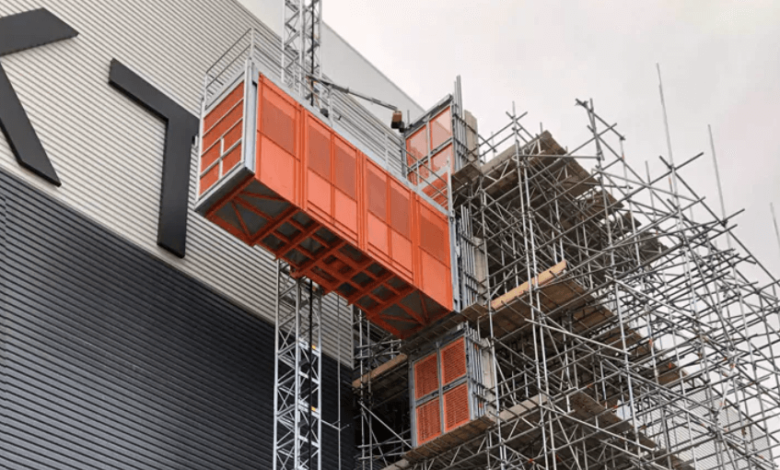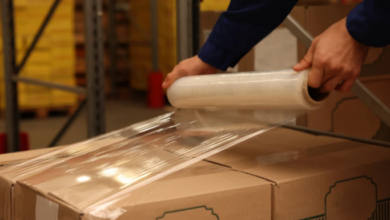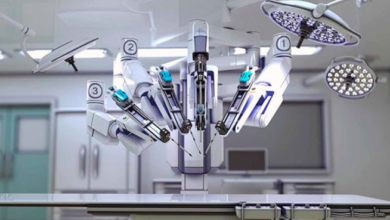Alimak Parts: Backbone of Vertical Access Solutions Across Industries

Vertical access solutions have transformed how industrial sectors operate in demanding environments. Whether it’s a construction site, mining operation, offshore platform, or high-rise infrastructure project, safe and reliable vertical transportation is essential. One name that resonates throughout these sectors is Alimak, renowned for its durable, performance-driven hoists and elevators. However, even the best machinery is only as reliable as its maintenance, and this is where Alimak parts become a pivotal concern.
This in-depth article will take you through everything you need to know about Alimak parts—their significance, range, sourcing strategy, maintenance tips, and the future of spare part technology.
As more industries adopt Alimak lifts to optimize workflow and ensure worker safety, the role of genuine Alimak parts becomes central.
Every part of an Alimak lift, from the motor to the braking mechanism, is meticulously designed to meet stringent industry safety and performance standards. Using the right parts doesn’t just restore function—it preserves the integrity and lifespan of the entire system.
Comprehensive Categories of Alimak Parts
Let’s break down Alimak parts into functional categories, each vital for specific operational roles.
1. Propulsion and Drive Mechanism Parts
- Pinion Gears: Interlock with the rack on the mast to propel the cabin vertically.
- Gear Assemblies: Convert motor speed into torque, suitable for vertical lifting.
- Motor Couplings: Bridge between the gearbox and the drive motor for consistent motion.
2. Electrical and Control System Parts
- Control Panels: The brain of the elevator, executing commands and safety checks.
- Circuit Boards: Control communications and safety sensors.
3. Cabin and Structural Accessories
- Cabin Doors and Locks: Ensure the cabin stays securely shut during operation.
- Landing Gates and Interlocks: Control access between elevator and landing zones.
4. Safety Components
- Overspeed Safety Devices: Detect and correct uncontrolled descent.
- Braking Systems: Spring-loaded brakes engage during power loss.
- Emergency Stop Units: Instantly halts elevator movement in hazardous scenarios.
5. Mast and Climbing System Parts
- Rack Sections: Provide the vertical track for the pinion gear.
- Mast Frames: Structural supports that ensure alignment and stability.
- Climbing Brackets: Support the vertical growth of the mast as buildings rise.
See also: The Future of Business Travel: Integrating Wellness and Massage
Why Only Use OEM Alimak Parts?
Some equipment owners are tempted to substitute original parts with cheaper alternatives. However, this comes with a risk. Here’s why authentic Alimak parts are non-negotiable:
- Safety Assurance: Only certified parts meet international safety compliance standards.
- Long-Term Cost Efficiency: Counterfeit or substandard parts often result in higher repair costs and premature replacements.
- Warranty Protection: Using unauthorized parts can void equipment warranties and lead to insurance issues.
Industries That Rely on Alimak Parts for Daily Operations
🏗 Construction
Parts such as mast sections, rollers, and motor couplings endure alimak parts wear daily and must be routinely replaced.
Safety is non-negotiable in these extreme environments.
🔧 Industrial Plants
Power plants, cement factories, and wind turbine installations rely on Alimak elevators for inspection and maintenance. Parts like control panels, brakes, and sensors are routinely monitored and swapped.
Identifying When to Replace Alimak Parts
- Irregular or Jerky Movement: Likely due to worn pinions or misaligned mast racks.
- Frequent Error Codes: May point to sensor or circuit board issues.
- Unusual Noise: Often indicates motor bearing wear or brake failure.
- Cabin Misalignment: A sign that roller guides or mast brackets are compromised.
- Overheating Components: Suggests that electrical or motor-related parts may be failing.
Routine inspections help preempt major issues by identifying and replacing parts before they fail.
Procurement Strategy: Sourcing Alimak Parts Smartly
Here’s how to approach procurement:
✅ Use the Correct Part Number
Maintaining Inventory of Critical Alimak Parts
Key tips include:
- Stock High-Turnover Parts: Keep items like limit switches, fuses, relays, and door components in inventory.
- Use Inventory Management Software: Track part usage and schedule automatic reorders.
- Label Storage Clearly: Use part numbers and expiration dates for quick identification.
- Train Maintenance Teams: Proper installation and maintenance practices ensure part longevity.
and part type. Common items ship in days, while complex parts may take weeks.
Conclusion: The Unseen Power Behind Every Reliable Lift
While Alimak lifts may steal the spotlight on towering structures or rugged mining pits, it is the strength and precision of their parts that keep them running. Every Alimak part, no matter how small, contributes to a larger promise: safe, consistent, and powerful vertical transportation.
Whether you are overseeing a megastructure project or managing equipment in a remote facility, investing in the right Alimak parts means investing in operational success, worker safety, and peace of mind. With proper knowledge, proactive maintenance, and strategic sourcing, your Alimak system can deliver uncompromised performance for decades to come.







